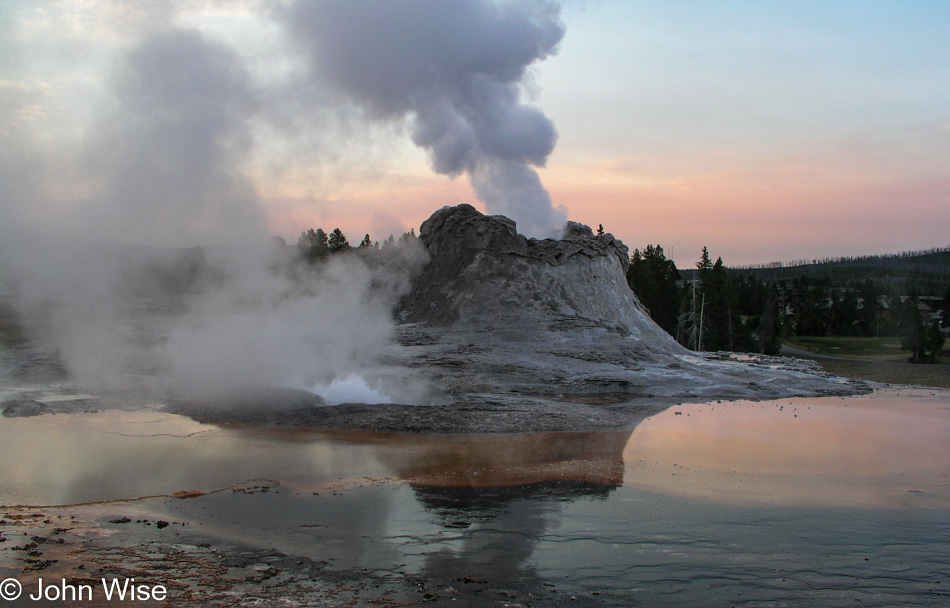
Up before the break of day so we can capture the first light to fall upon the Upper Geyser Basin. The sky is turning pink and pale blue before I’m able to capture a worthy photo to celebrate the return of the sun.
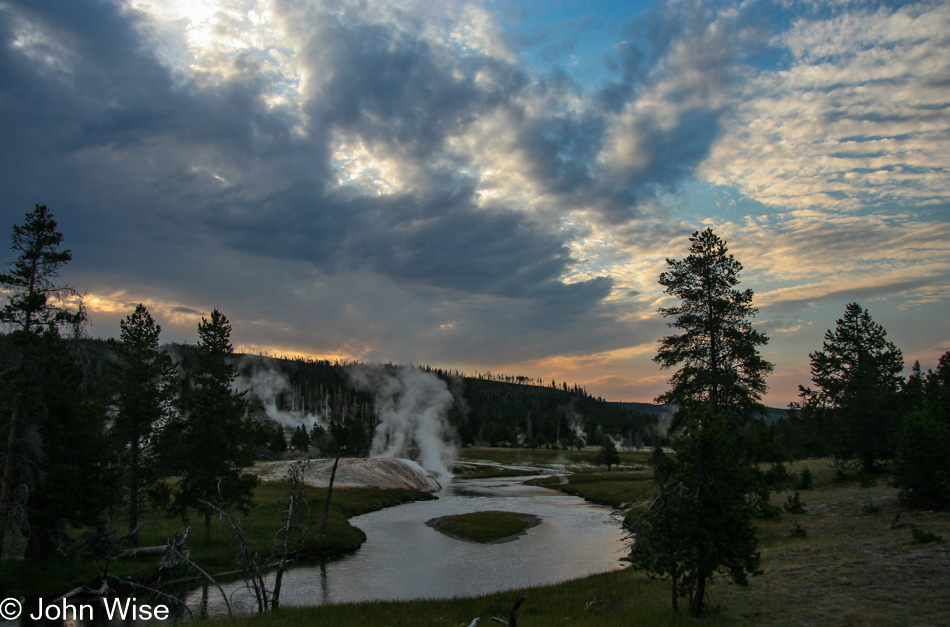
Our original plan to hike the Lone Star Trail was nixed so we could linger yet again right here with all these beautiful sights we never tire of seeing.
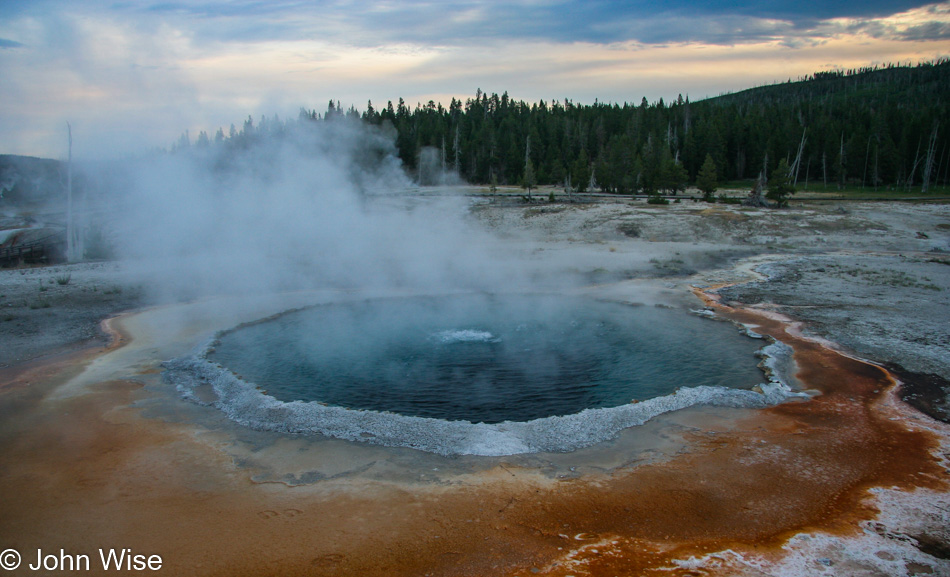
We’ll end up spending nearly three hours in astonishment meandering these trails refamiliarizing ourselves with features we feel we should know by now but still feel just as new to our senses as they did seven years ago on our first visit.
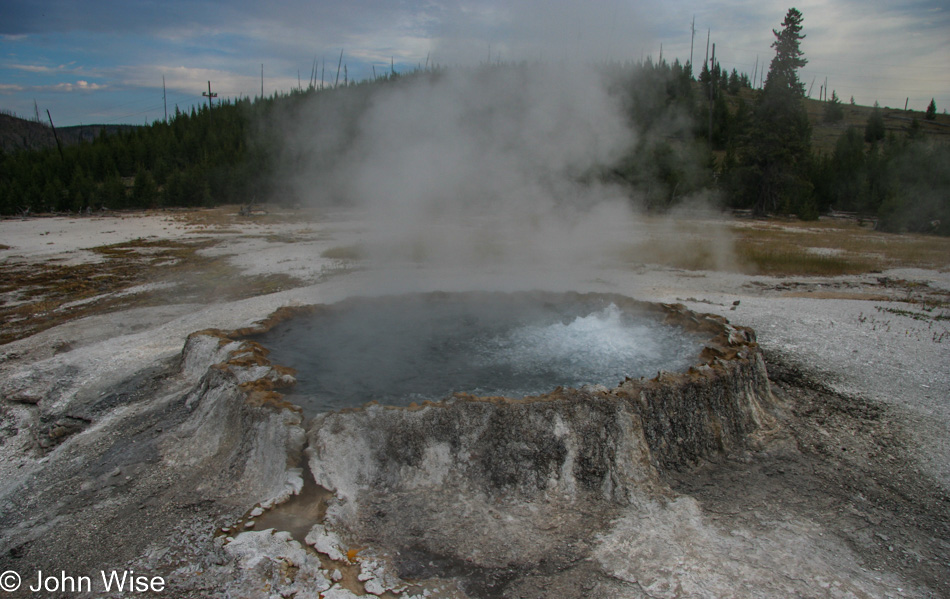
The building blocks are essentially all the same: water, minerals, heat, and gases, but these things visible to our senses manifest in so many ways that each unique spring, geyser, and the various other windows into the world below our feet demonstrates how little of reality is actually seen by us.
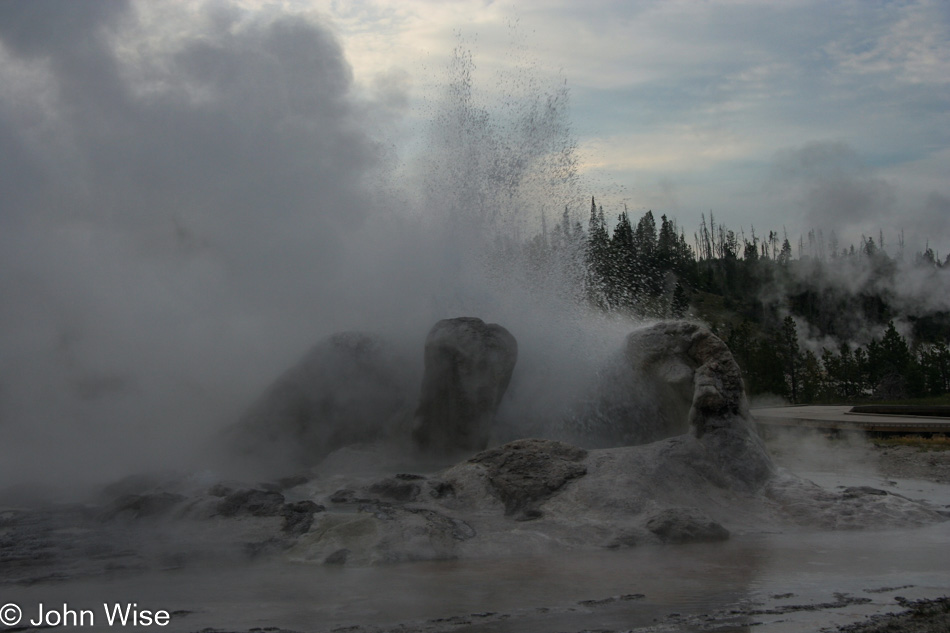
But we walk along in our daily life staring blankly at the artifice we’ve contributed to and we no longer are able to see the chaos of nature that exists around us every moment of every day. We are lulled into a routine, and that likely holds true for those who work in places like Yellowstone, as it seems to be human nature to take for granted the familiar.
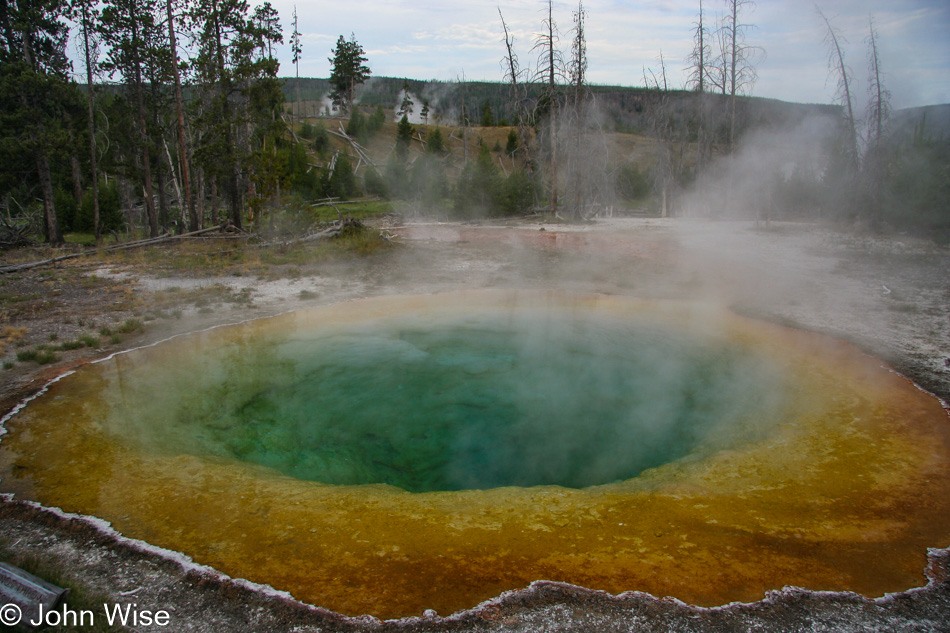
You are an ant approaching a white-topped mountain that, upon the approach of the peak, you realize is not snow but calcium. At the crest, you look out across a vast sea steaming in the distance; should you fall in, you will instantly die in the scalding water. Love is similar in that you are an ant approaching the periphery of another person; you see their beauty, but in getting to know them, you find a depth you hadn’t realized before. Their potential stretches to the furthest point on the horizon, but what’s yet to emerge from them is still buried deep within. You’ll have to wait around and visit countless times before you realize they may be infinite, but are you too so infinite that you can continue to absorb what they have to offer?
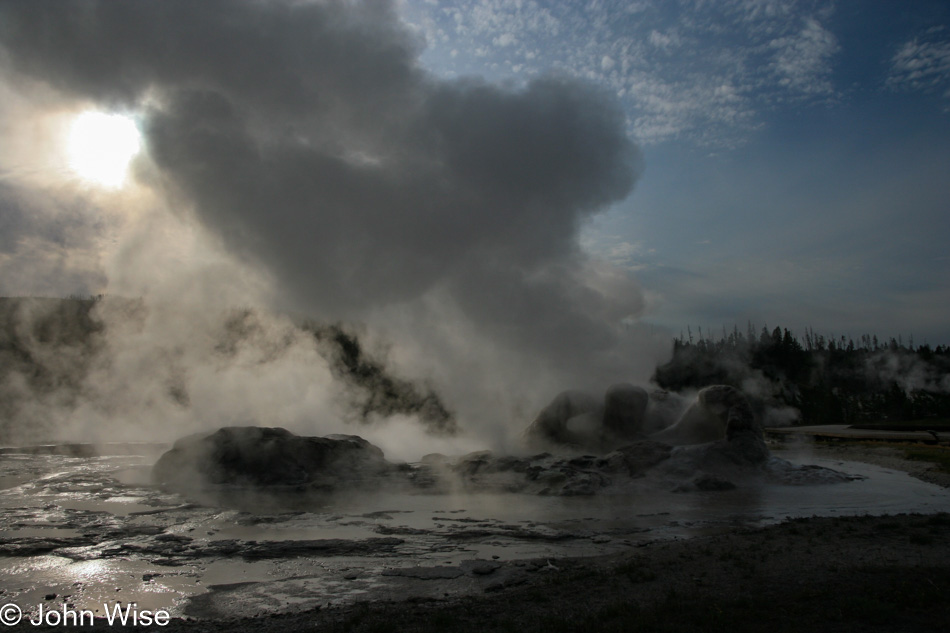
The character of Earth changes every moment, with every step and shift in shadows, the thing once familiar has become something different. Did you know, did you really know that about yourself and those around you?
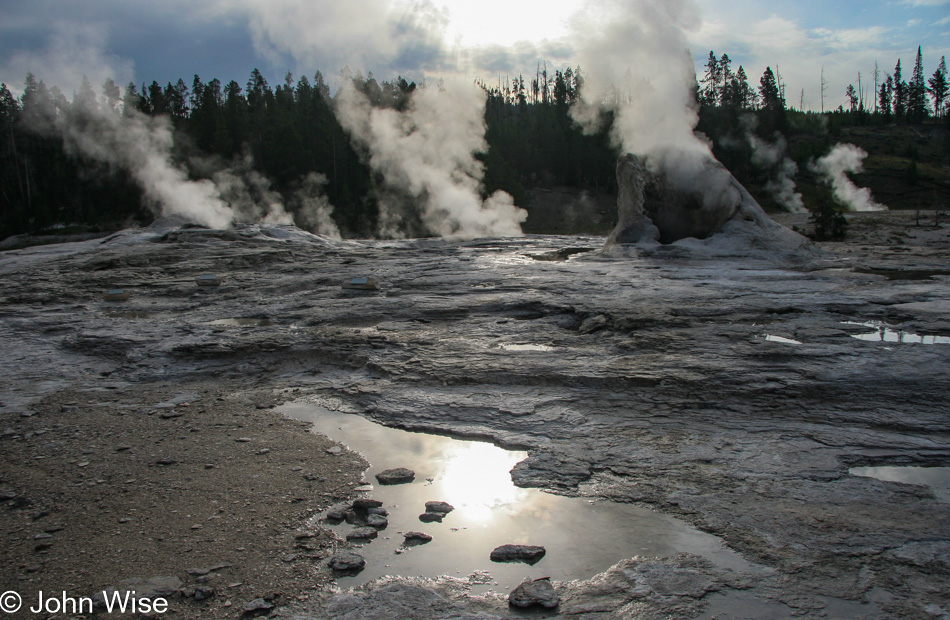
Why is it so effortless to see the beauty of those external things we gaze upon from the distance? The play of elements we see are all contained in this gas hovering above the surface of the earth; they, too, are internal elements of a stage we are looking into. They exist in the depths of our imagination as much as on the surface of reality, as our mind’s eye constructs the meaning of what we sense within our infinitely small heads. Inside these skulls, we work with hearts and souls to picture all things great and small that are only outside of us because of our skills of giving meaning to abstractions.
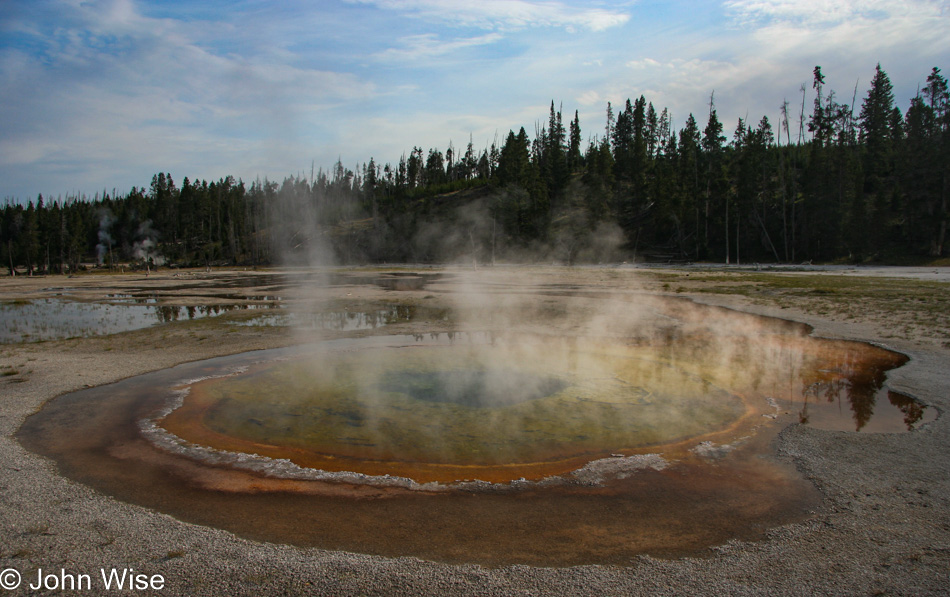
And now we reach that critical juncture where a thread must be broken as I’ve followed things as far as I can. A branch in the path is taken where things will sound and appear different, if not pictorially, then narratively, as though I may want to explore the vastness of linguistic travels; I only have an inventory of those words and ideas that I’ve allowed in. If measured in the accumulation of experiential content, I’m certainly wealthier in that department, but I cannot disgorge trees and mountains upon the paper for you to read.
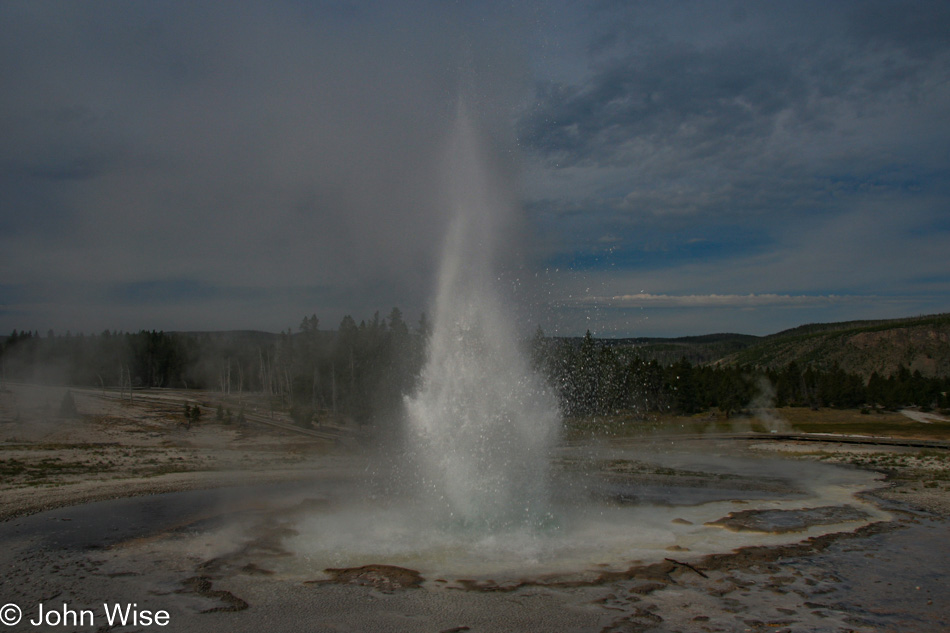
Blogging here allows me my own geyser-like moments where the pressure below the surface accumulates until it explodes out into the atmosphere. There’s no idea where the fragments of thoughts will travel as they punch through, even when I attempt to guide them up and outward; momentum has a way of dictating enough chaos that sometimes the sight is beautiful, exquisite even, and then at other times they just sputter barely above the surface of awareness.

Choosing which images accompany a blog entry is never really easy. Starting this day with more than 450 photos that were taken with the hopes of being the greatest reminders ever captured, not all of them turned out that way. So, I must winnow them down to a manageable number. This particular photo Caroline chose to leave out, but it was one of my favorites and so it’s here. This scene was reduced to a monochromatic view where the reflection of our star in a thin layer of mineralized water removed most of the color that might have otherwise been present. Remove your own thin veneer of color, examine yourself for what type of light you reflect, and then ask if you are seeing the real you even then.
With the sun reflecting off this shallow pool of geyserite and calcite, a feature here at Yellowstone is created that might easily be overlooked. Not everything must have the colorful palette of the Grand Prismatic or the opulent height of the Old Faithful Geyser; even the little things deserve our recognition.
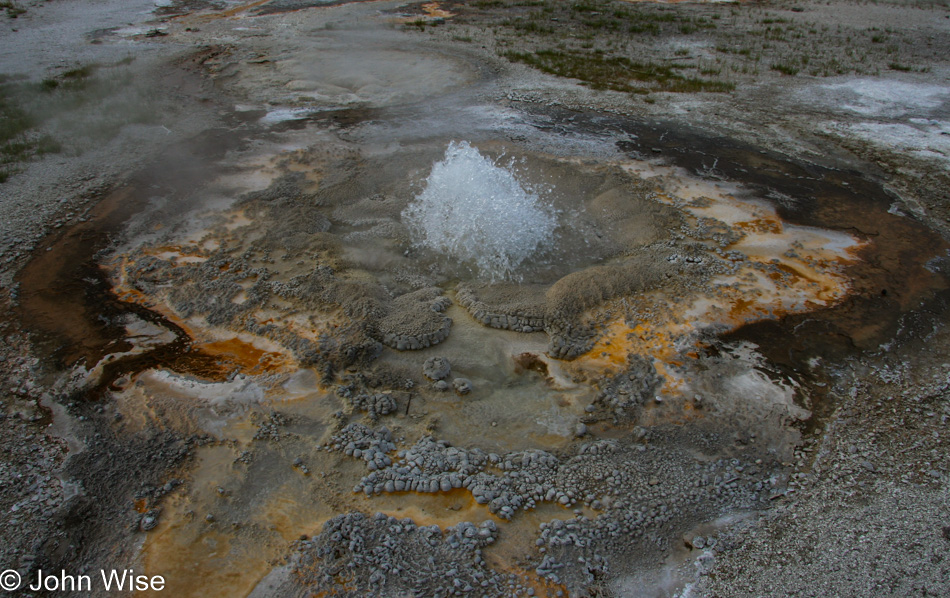
What is the musical accompaniment that should play to this bubbling of superheated water? Does it feature drums, violins, or pianos? Is it a soft voice or a bombastic rap of arrival and disappearance? Personally, I hear birds in the distance and the sporadic hiss of gas rupturing from the depths.
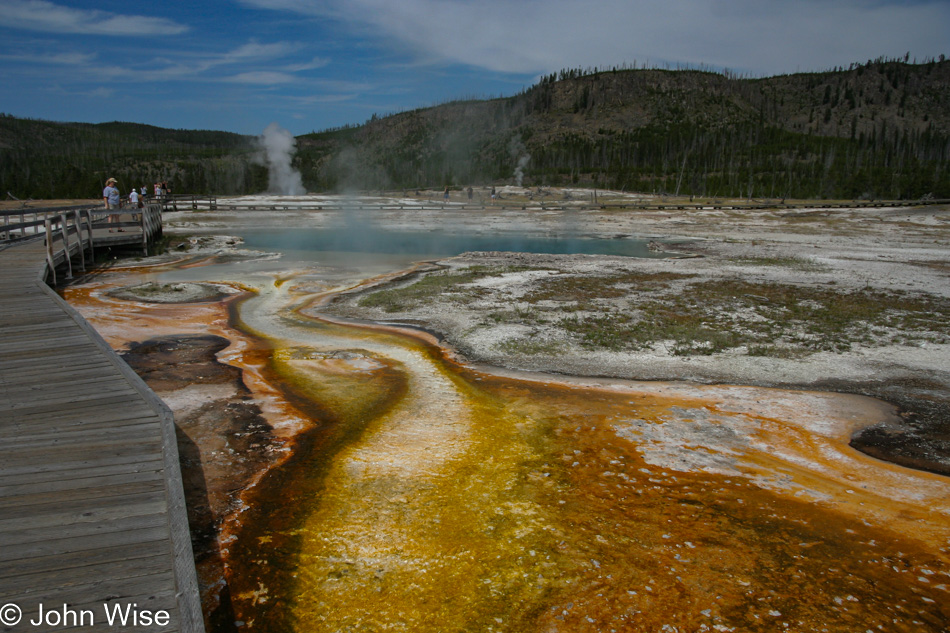
This is you splayed out flat. Bacterial mats, hydrological functions, pathways, things carrying information, and various decorations. You, too, are a biological entity, and while you may choose not to see it here in Yellowstone, just like the rest of our planet, we are part of an enormous living thing oblivious to the symbiotic nature of it all. We stroll atop things with egos that hold us outside of the planet that is solely responsible for our potential existence.
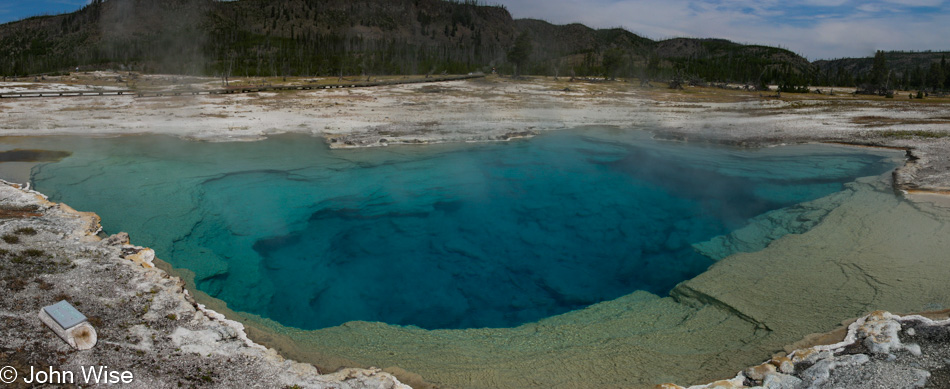
Our fragility stops us from diving into the boiling pit of beauty, not just that our organic being would be boiled off of our bones but metaphorically speaking too, we cannot jump into the boiling pit of knowledge as our minds would be boiled out of our sanity and so we are rendered small, petty, and often stupid. We stay safe behind the signs others have put up for us as we cannot comprehend where it’s safe to tread.
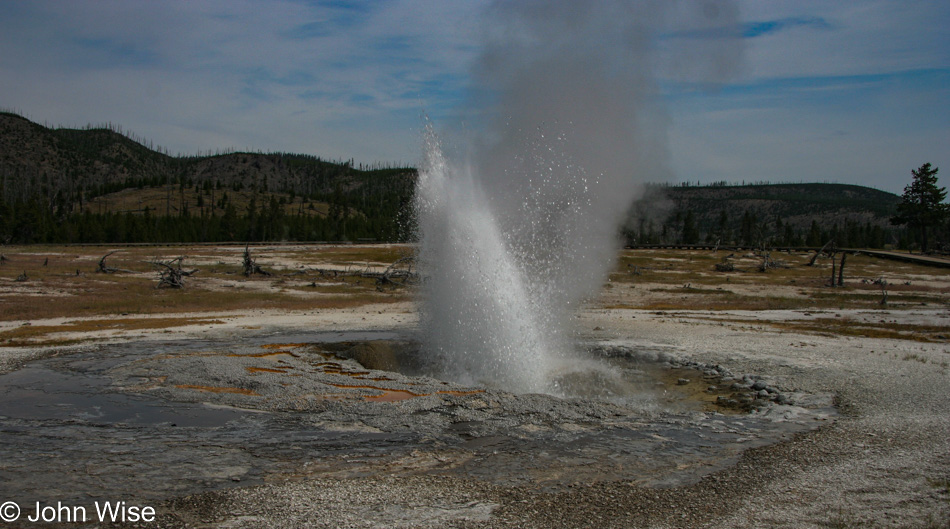
Ah, the perfect metaphor for John can be found right here in this crusty corner spouting off a bunch of hot water and gas. Nature, in this sense, is lucky as it doesn’t require words to convey the message of what it is while we humans attempt to be like nature when we put our most beautiful people forward, but isn’t that denying the intrinsic nature of what people are, the sum of their words?
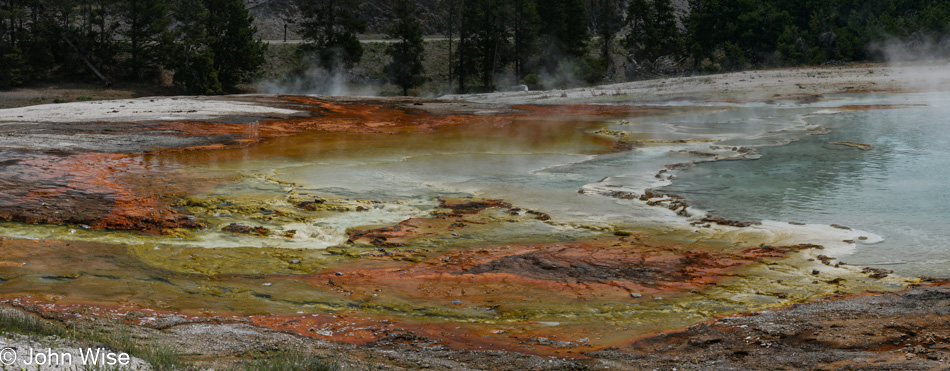
And don’t think for a moment that art is not the sum of a human’s words. We could not paint without the knowledge that pigments are able to stain a surface and that we can exercise control to determine if the strokes are horizontal, vertical, or diagonal. We either mimic patterns already seen, or maybe we stumble into inspirations, but still, they are tools being utilized by a mind that has assigned a linguistic value to all parts that will be utilized to create something.

This luxury we have to go about our world outside the biological function of requiring food and shelter has allowed us to be witness to this beautiful flow found in nature and copy it so we might adorn ourselves or our dwellings with the aesthetic sights we’ve witnessed. Using technology from the earliest cameras to our current age of digital imaging, we have made those things of earth and universe portable. Instead of needing to experience nature on strictly its terms, we package it up and carry reminders with us wherever we might go.
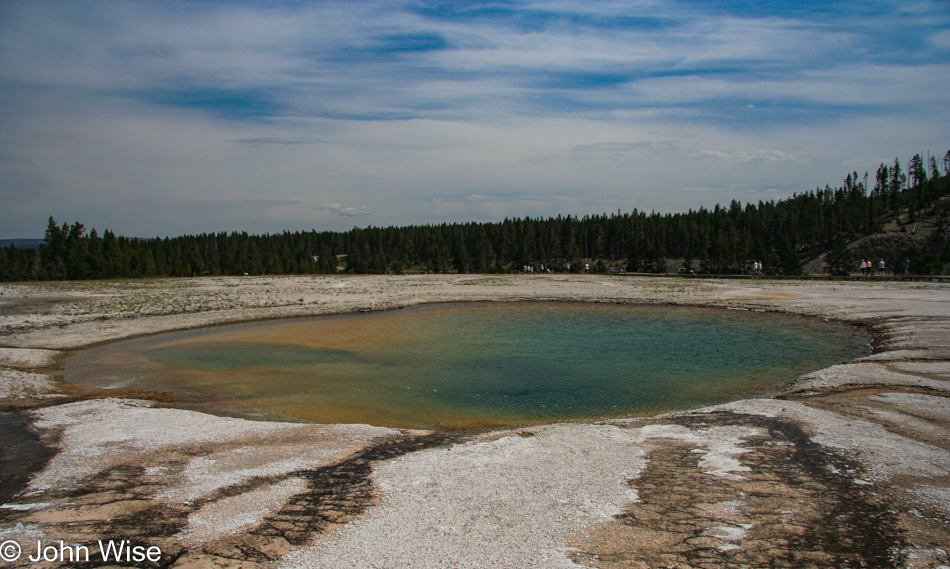
This is Turquoise Pool at Midway Basin, but it’s not the Turquoise Pool I’ve known. I did not know Turquoise Pool because Turquoise Pool is not knowable. I’ve seen this pool before; I know I have, but then why do I not really remember it? Because, like me, it’s changing. Were its waters hotter or colder the last time we were here? Were the conditions dryer or wetter? What of the sun? The characteristics of nature are forever changing, though it may be difficult to determine just how or when they changed.
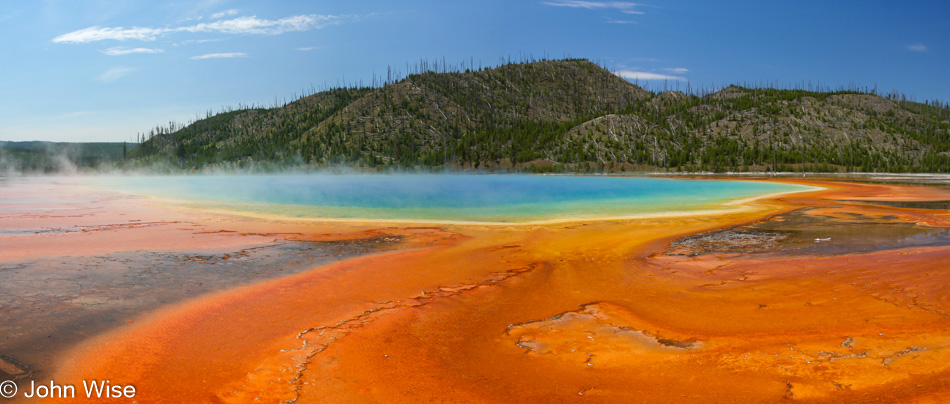
Sure, this is a slightly different viewing angle of Grand Prismatic, but I couldn’t choose between the two, so just as we stare at it for an inordinately long amount of time, why not offer the chance to see it as we do in the park where we look from multiple different spots along its bright orange shore.
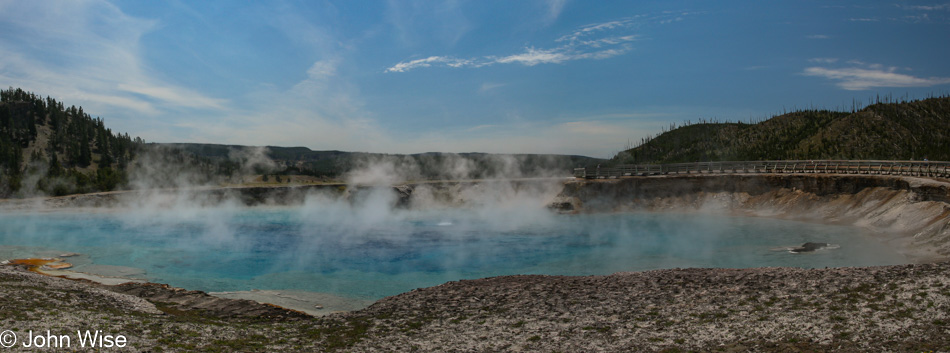
Have I written this before that I don’t believe we’ve ever seen the center pool at Excelsior Geyser Crater? Maybe we have, but who cares, as this will forever be the way I saw it for the first time on this visit.
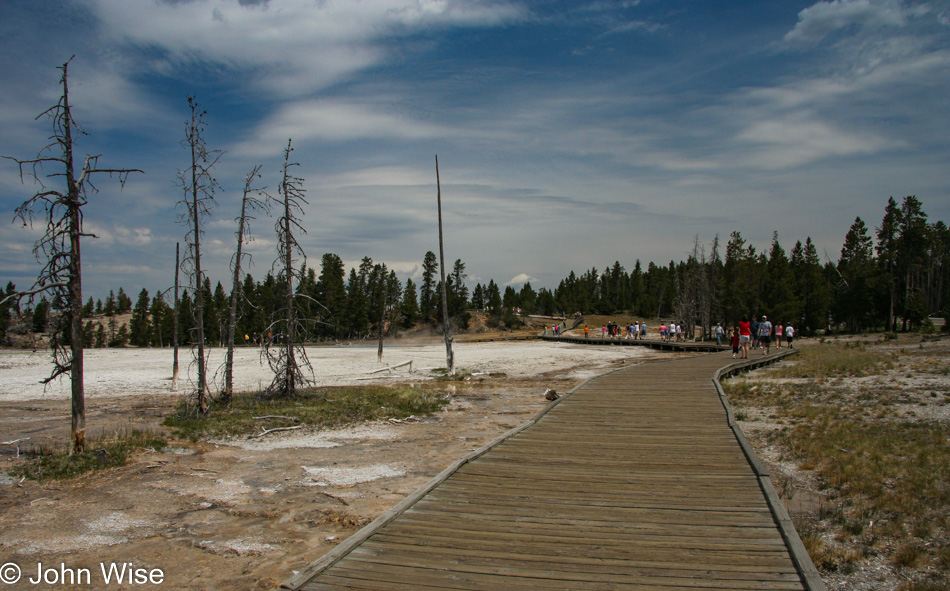
Here we are on the Fountain Paint Pot Trail, just getting lost in the park instead of starting our drive home as though one more minute, one more geyser, one more time holding hands and smiling at each other will sear the important stuff into our memories never letting them go.
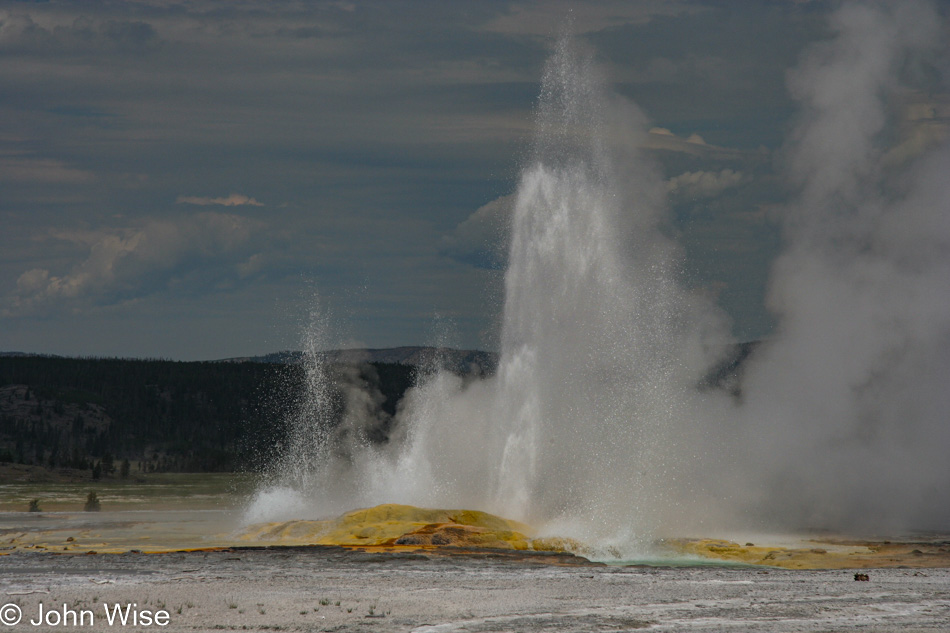
Clepsydra Geyser as seen close up and zoomed in.
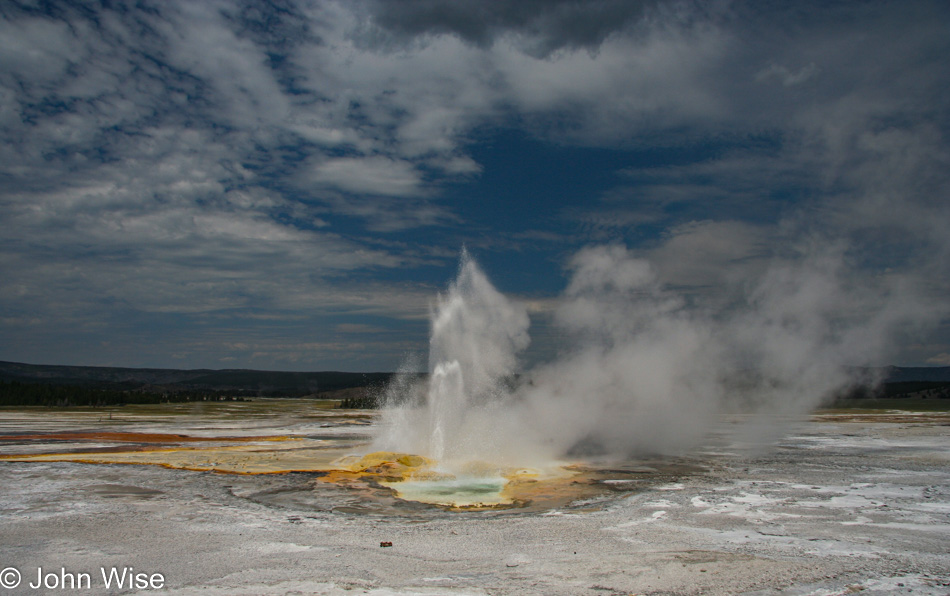
Clepsydra Geyser as seen from a different angle. Like the Grand Prismatic above, it’s not just seeing a thing but taking the time to see it again and again, so you might appreciate its various characteristics that you’ll only want to see yet again. The hopelessly insatiable desire to fall into beauty holds us tight, allowing the justification to go further.
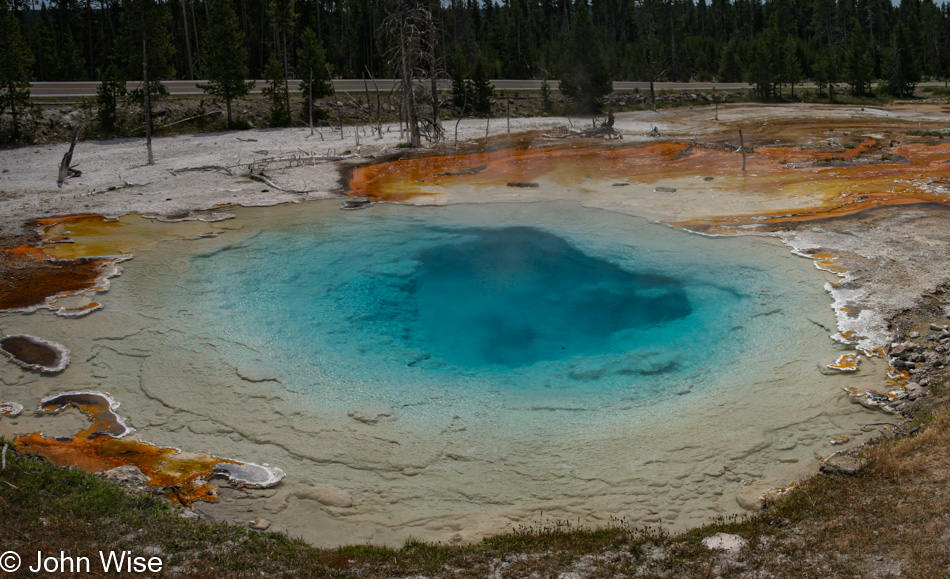
Silex Spring on the way back to the car and now we’re satisfied.
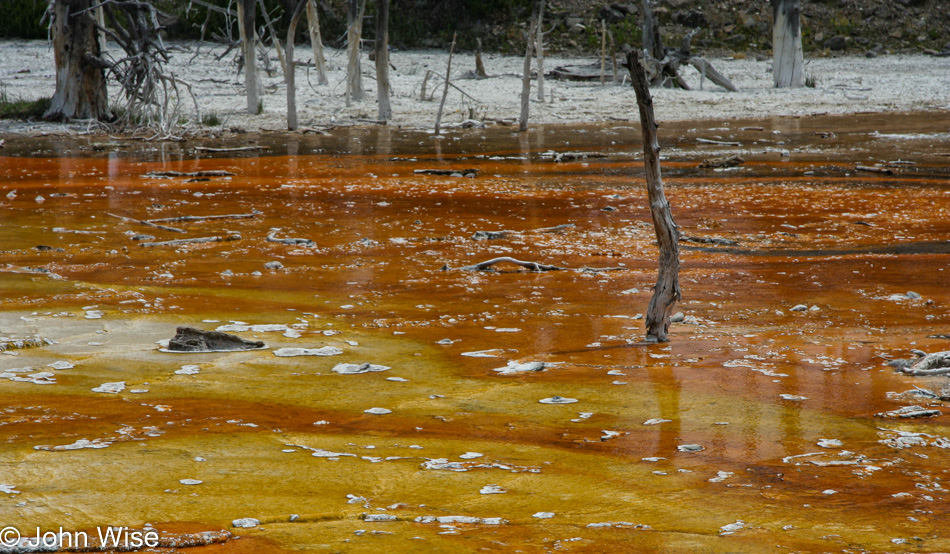
Hey Reason, it’s only 22 miles to Norris Geyser Basin, and should you never be able to return to Yellowstone, wouldn’t you want to know you saw it all on such a nice day?
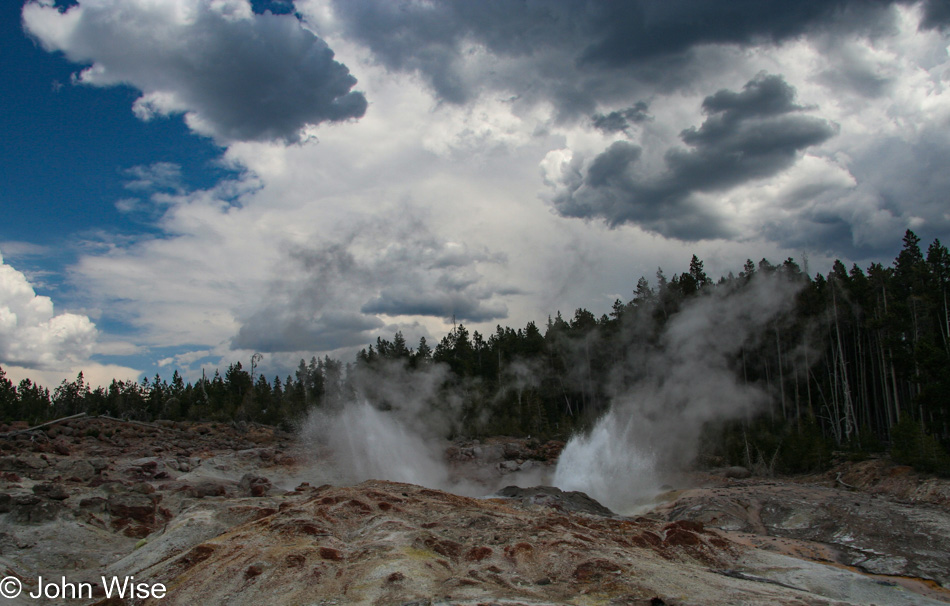
The rugged moonscape of Norris is like a wholly different environment where the elegant grace found in the other basins has been stripped away. The ground is hotter here, too, making me wonder if this won’t one day be where the volcano we are walking upon today erupts.
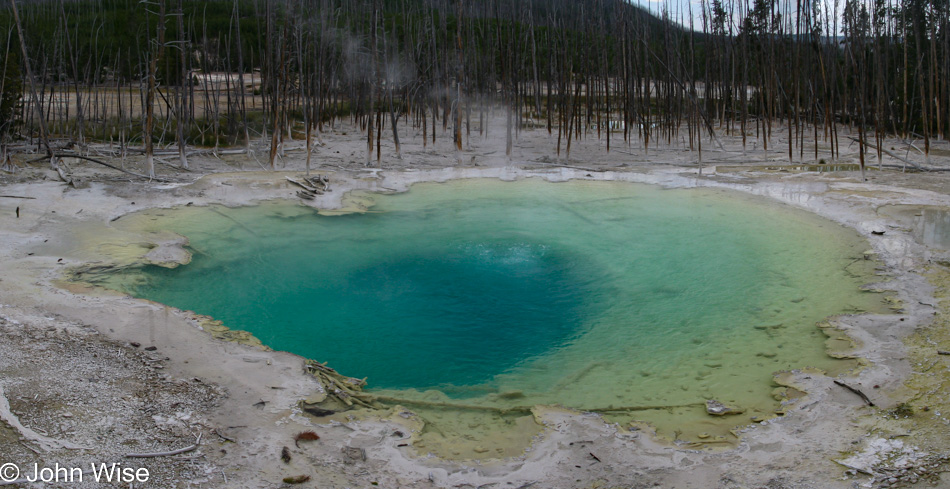
And with this photo, we bid adieu to Yellowstone and make our way to the exit, seriously this time.
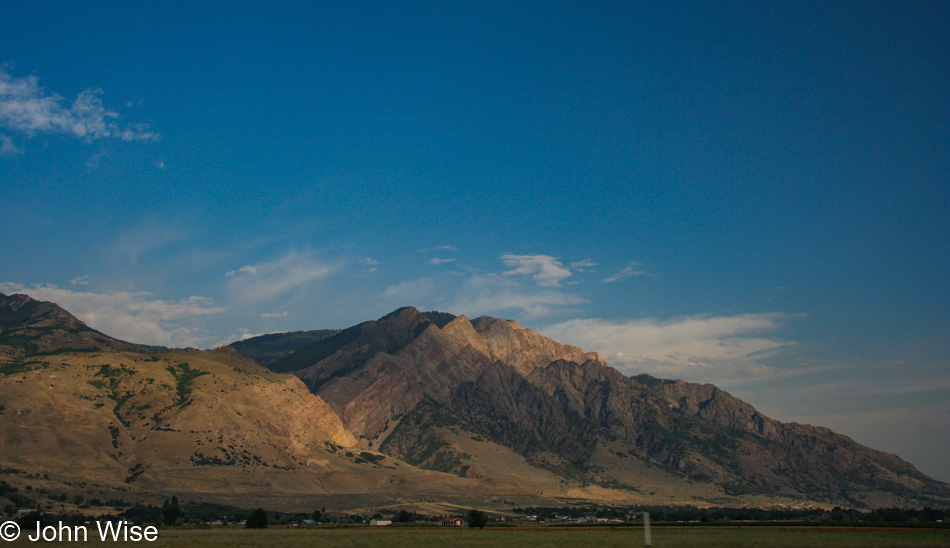
We needed to get south with no small amount of haste, so we were relegated to taking photos from the moving car, but that’s okay as it feels like we had a satisfying, immersive moment in America’s first national park. I wonder how long it will take before we return.